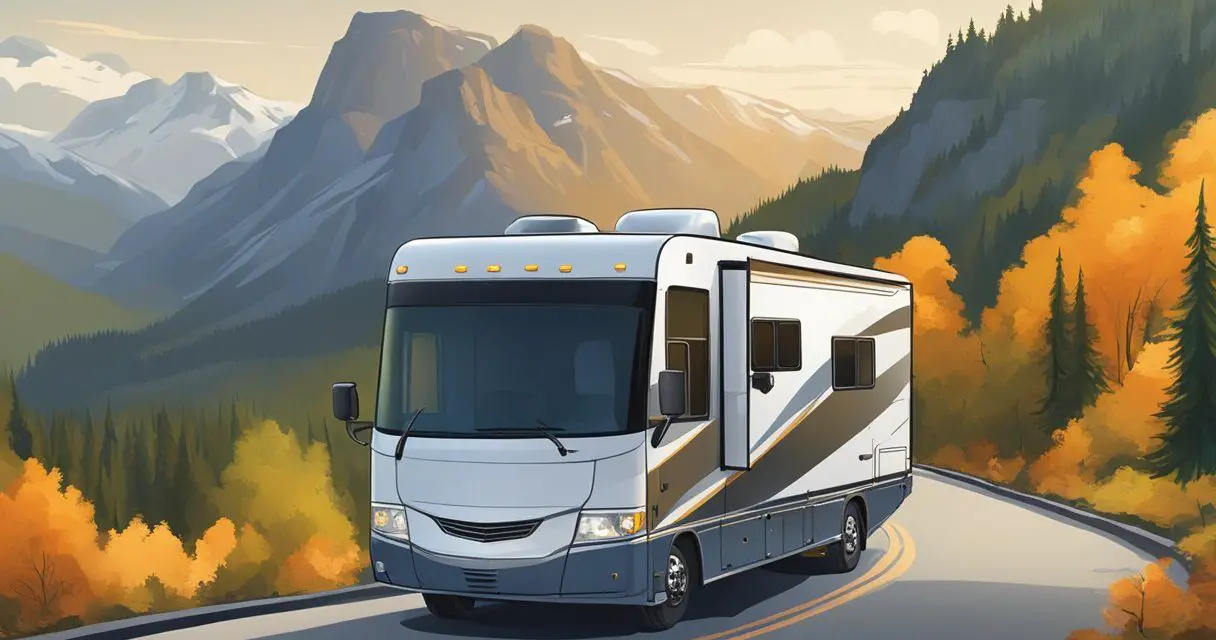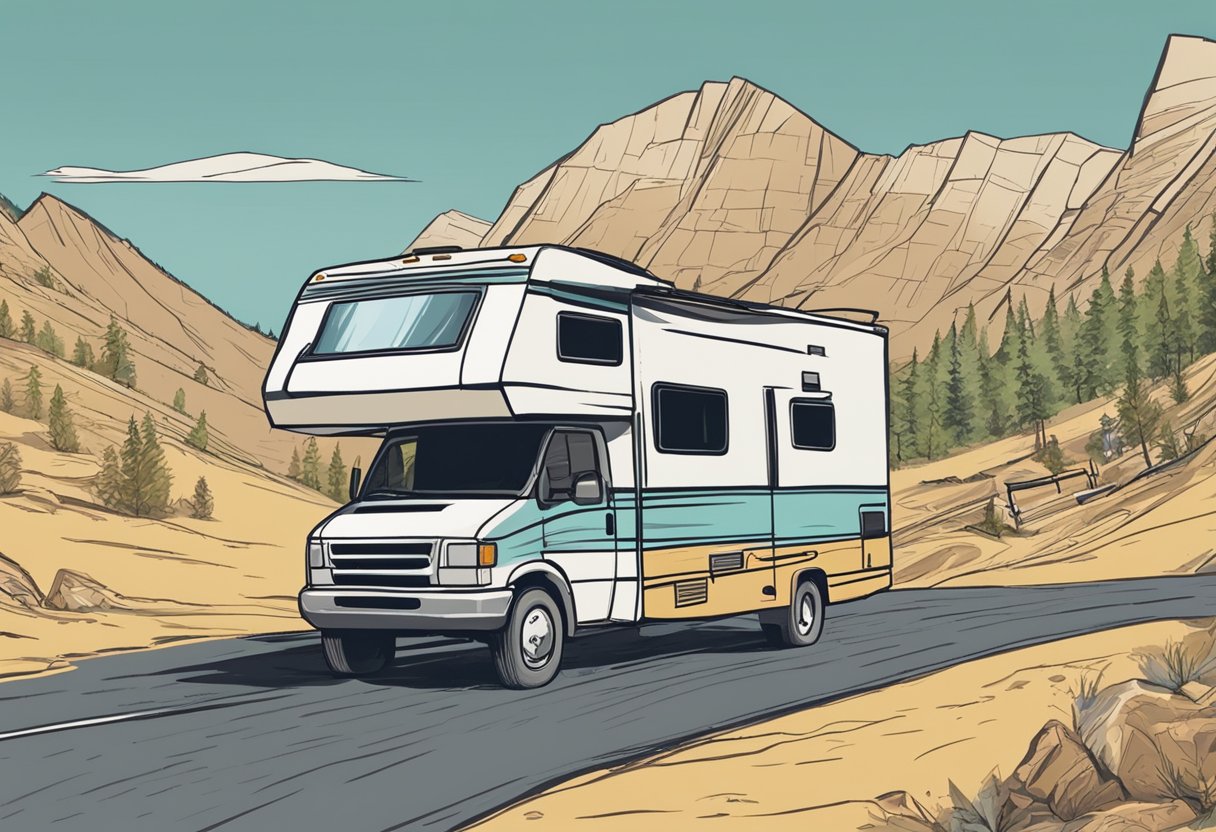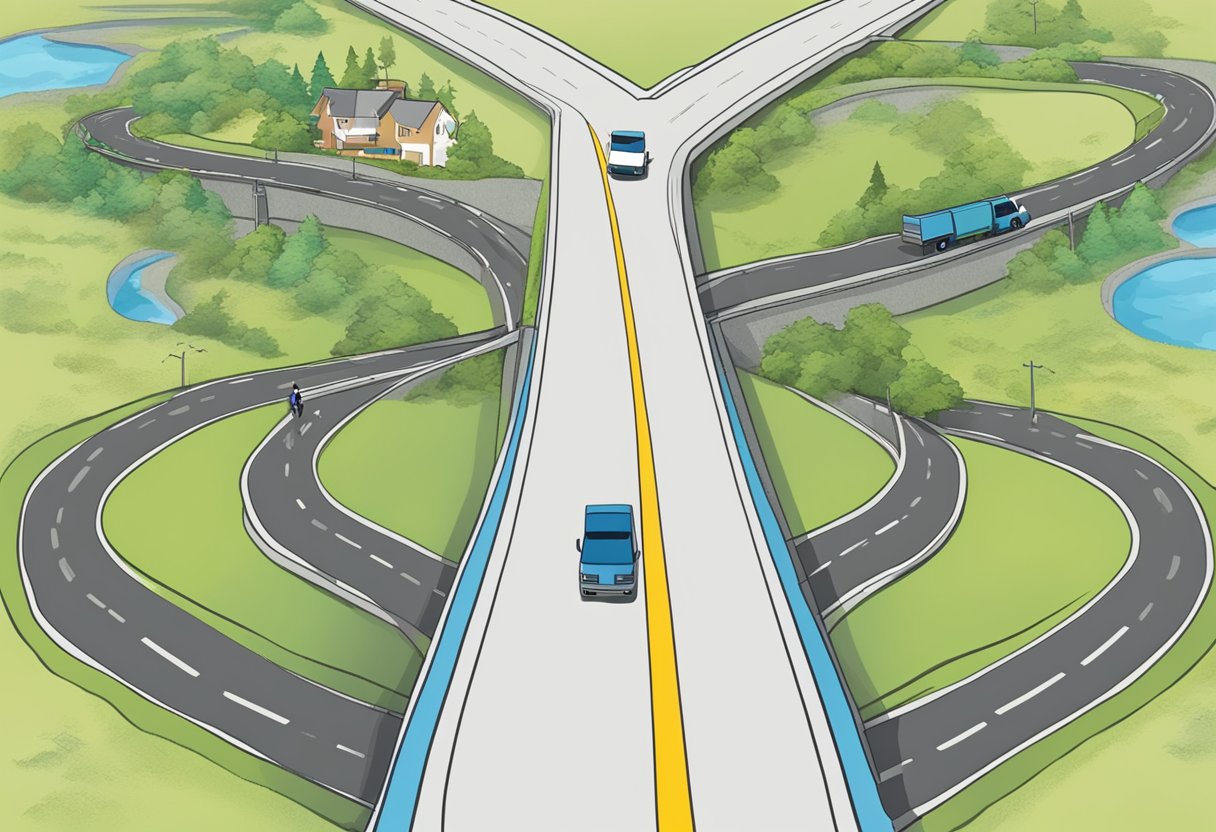Would you like to save this article?
Embarking on an RV trip is an exciting way to explore new places and enjoy the freedom of the open road. However, relying solely on GPS for navigation can sometimes lead to unexpected and troublesome outcomes. Understanding the limitations and potential pitfalls of GPS systems is crucial for a safe and pleasant RV journey.
Many seasoned RV travelers have shared their tales of adventures gone awry due to misguided GPS directions. While these devices are incredibly useful, they aren’t always attuned to the specific needs and constraints of RV travel, such as vehicle height restrictions and propane transportation laws. By being aware of these limitations, RV enthusiasts can better prepare and avoid unnecessary challenges on their trips.
1) “Turn left at the lake” (when there’s no lake in sight)
Imagine you’re cruising down a scenic highway, excited for your RV adventure, and your GPS suddenly instructs you to “turn left at the lake.” You glance around but see nothing remotely resembling a lake.
It’s a common frustration for RV travelers. GPS systems sometimes give outdated or flat-out incorrect directions. This can be especially problematic in remote areas where landmarks have changed over time.
Such incidents highlight the unreliability of technology in guiding RV trips. Relying solely on GPS can lead you astray, often causing unnecessary stress and detours.
Printed maps and local advice can be invaluable backups. They provide additional context and ensure you’re not left turning into empty fields, searching for non-existent lakes.
2) Unclear or outdated maps leading you off-road
Relying on GPS for an RV trip might seem like a no-brainer, but outdated or unclear maps can be a significant issue. Some GPS devices may use old data, leading travelers onto challenging and unsuitable roads.
Unclear maps might not show crucial details like road closures, construction zones, or re-routes. This can result in an unexpected and possibly dangerous detour.
Even popular routes can change over time. GPS systems may not update frequently enough to keep up. This delay can lead to confusion and frustration during an otherwise smooth journey.
Always consider a backup plan, such as updated printed maps or a secondary navigation app. This way, RV travelers can minimize the risk of getting off-track due to outdated or unclear GPS maps.
3) Loss of signal in remote areas
Remote areas often lack the infrastructure needed to maintain a stable GPS signal. Mountains, forests, and valleys can block or interfere with satellite signals.
Travelers may find themselves without guidance in critical moments. Brief periods of signal loss can delay arrival times and create uncertainty.
Even if a signal is acquired, it might be weak or unreliable. This can lead to inaccurate positioning, causing confusion.
4) Inaccurate road names or numbers
Sometimes GPS devices display wrong road names or numbers. This can happen due to outdated maps or errors in data processing.
You might drive onto a road that wasn’t on the GPS map because it was built recently. Or your GPS might show a road number that was changed years ago.
This can be very confusing, especially in rural areas with fewer marked roads. Imagine ending up on a narrow, unpaved road with an RV because of a GPS error.
To stay safe, they should double-check the route with a paper map or a secondary app. This extra step can prevent wrong turns and save time.
5) Confusion between similar-sounding destinations
GPS systems can sometimes mix up destinations with similar names.
This can lead RV travelers to the wrong location, wasting time and fuel.
Imagine mistaking Springfield, Ohio, for Springfield, Illinois.
Travelers might end up hundreds of miles off course. Planning and verifying manually can help avoid such issues.
Double-check destination details to ensure a smooth journey. Using GPS with thorough cross-verification remains essential.









